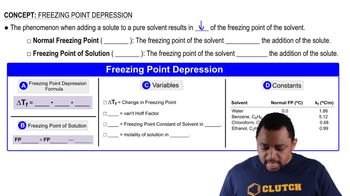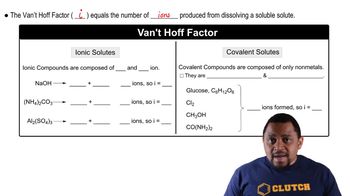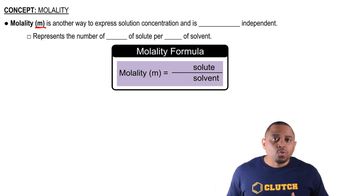Here are the essential concepts you must grasp in order to answer the question correctly.
Freezing Point Depression
Freezing point depression is a colligative property that describes how the freezing point of a solvent decreases when a solute is added. The extent of this depression depends on the number of solute particles in the solution, which is calculated using the formula ΔTf = i * Kf * m, where ΔTf is the change in freezing point, i is the van’t Hoff factor, Kf is the freezing point depression constant, and m is the molality of the solution.
Recommended video:
Freezing Point Depression
Van't Hoff Factor (i)
The van't Hoff factor (i) indicates the number of particles into which a solute dissociates in solution. For ionic compounds like MgCl2, which dissociates into three ions (one Mg²⁺ and two Cl⁻), the van't Hoff factor is typically greater than one. In this case, the given i value of 2.7 suggests that the solute behaves in a way that results in more particles than expected, possibly due to ion pairing or other interactions.
Recommended video:
Molality (m)
Molality is a measure of concentration defined as the number of moles of solute per kilogram of solvent. It is expressed as m = moles of solute / mass of solvent (kg). In this problem, calculating the molality of the MgCl2 solution is essential for determining the freezing point depression, as it directly influences the extent of the freezing point change when the solute is added to the solvent.
Recommended video:
 Verified step by step guidance
Verified step by step guidance

